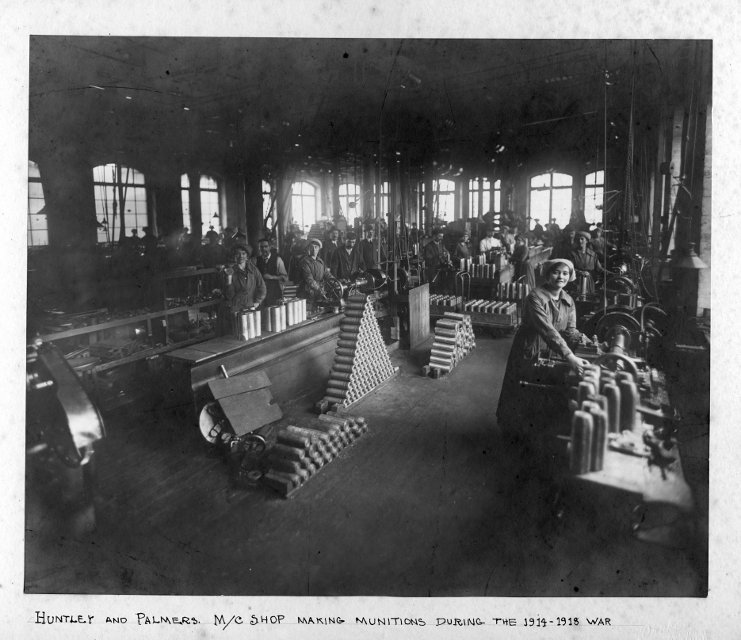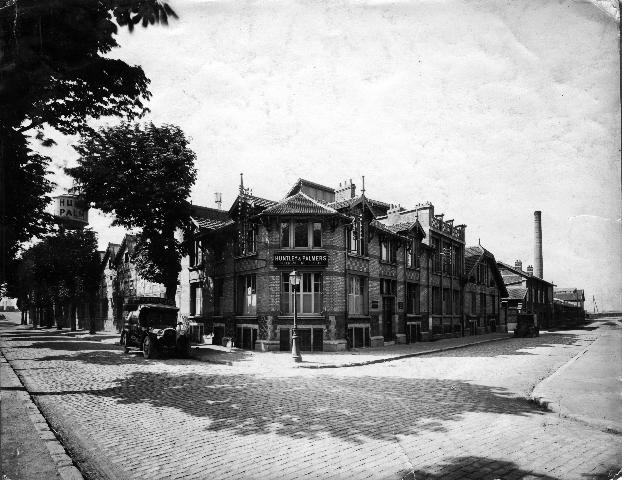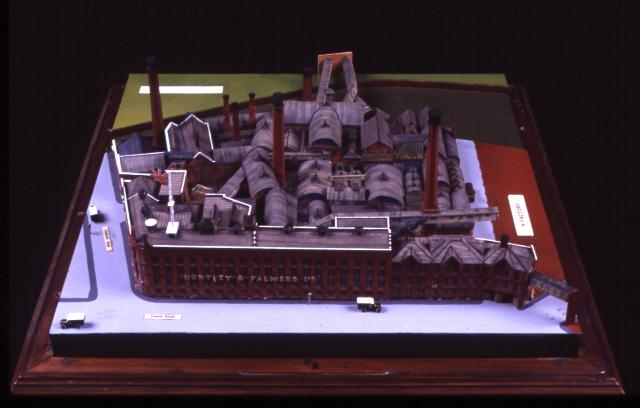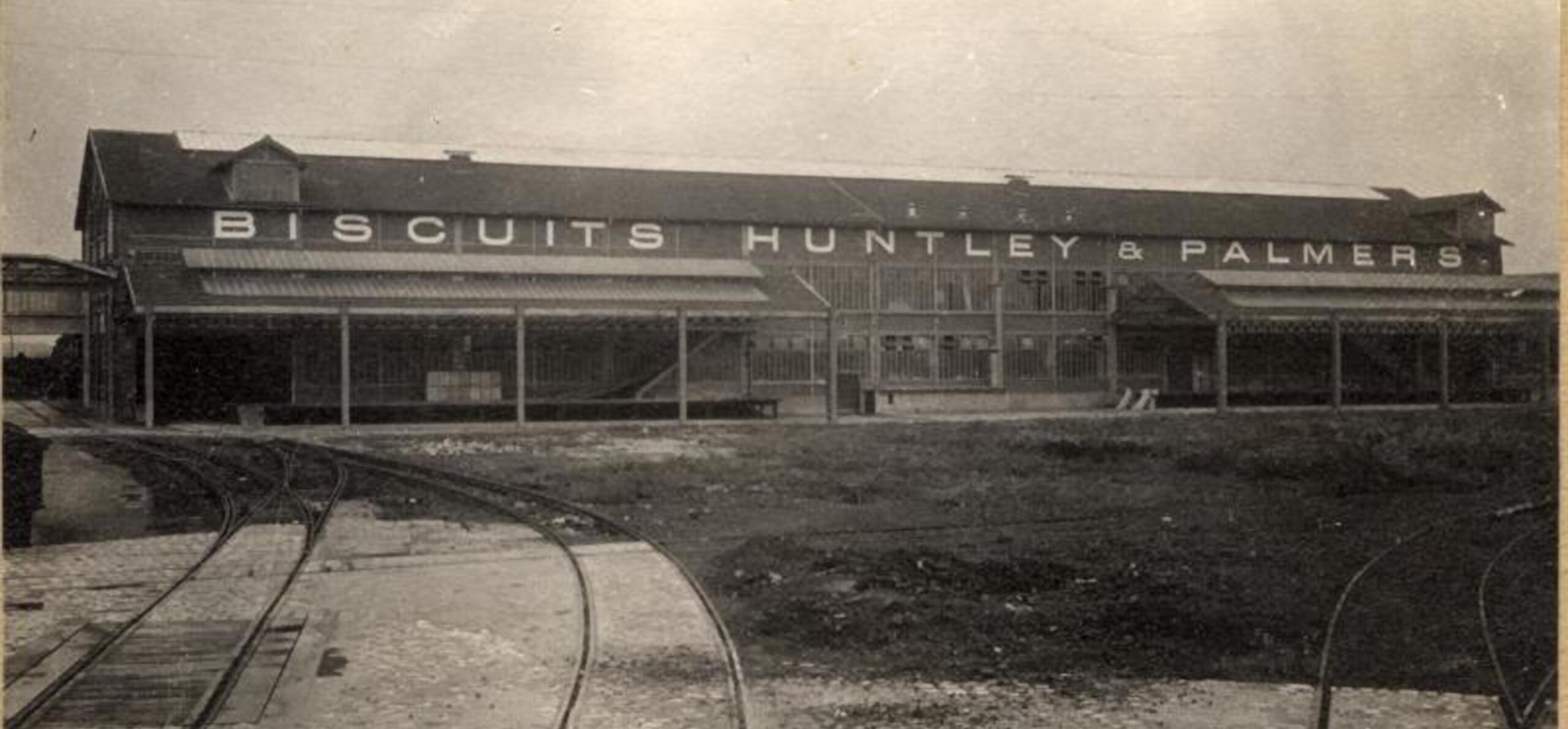Despite the outbreak of the First World War, 1914 to 1916 represented business as usual for the factory. However, from 1916, both food and labour shortages started to affect production and life throughout the site. The number of women employed increased as they began to take over some of the jobs of the absent men. From 1915, Alfred Palmer agreed to make shells in the engineering department and many women were trained to help, bringing an end to the strict segregation of sexes within the factory.

During the First World War, Huntley & Palmers workers were turning out 900 shell cases a week. Out of the 60,000 delivered, fewer than one hundred were substandard. The Ministry of War was very impressed by their quality. (REDMG : 1996.197.11)
A Huntley & Palmers factory in France?
Huntley & Palmers trade with France had declined from £268,000 in 1919 to under £14,500 in 1923. This decline was due to the continuing unfavourable exchange rates and the heavy tariffs on some biscuits. In 1924 Huntley & Palmers set up a factory in France at La Courneuve, an industrial part of Paris. With some old machinery shipped out from Reading, fifteen of the most important varieties of biscuits were manufactured.

Exterior view of the Huntley & Palmers factory at La Courneuve, Paris near St Denis, about 1930 (REDMG : 1997.130.237)
Unfortunately, in part as a result of the Second World War and the occupation of France, this factory was never successful. Despite attempts in the immediate aftermath of World War Two to modernise the machinery, profitability did not improve and in 1951 Huntley & Palmers shut the factory down. This experiment in manufacturing abroad had proved costly and it is notable that France was the only overseas country that Huntley & Palmers ever manufactured in.
Decline of the Reading factory
During the first fifty years in the factory, business for Huntley & Palmers boomed and their pioneering technology was admired by many. However, by the turn of the century, faults in the business started to appear. Many of the factory buildings and machines had become obsolete as opportunities for renewal had not been taken up. A valuer’s report in 1905 commented on how even when the old machines were replaced, the new machines were merely copies of the old ones with no improvements made. These comments were made in vain.
The 1931 report
In 1931 Rupert Carr produced a detailed report on Huntley & Palmers manufacturing processes. He concluded that although many of the machines showed great ingenuity in design – as many of them had been made in the factory, the factory was inefficient and displayed a lack of co-ordination between machinery and departments.

Until 1931, no major renovations of the factory had taken place. In 1936 the office facing the Kings Road was finally demolished and replaced by a modern, more practical building. This model shows the factory before redevelopment. (REDMG : 1997.130.1034)
Read on to learn about life in the factory from 1930 to 1960.





